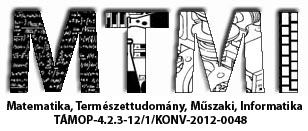Effect of TG2 on inclusion formation in a cell model of protein misfolding and aggregation
Abstract data
Transglutaminase 2 (TG2) has been implicated in Alzheimer’s, Parkinson’s and Huntington’s diseases, in which protein misfolding and improper clearance are believed to play a cardinal role. The level and activity of TG2 have been shown to rise in affected brain areas. N-γ-glutamyl-ε-lysine bonds, end products of TG activity, were detected in the CSF and intraneuronal inclusions of patients. TG2 crosslinks many of the disease related proteins in vitro and in cells. On the other hand, Huntington’s disease model mice deficient in TG2 show an increased number of inclusions and an alleviated pathology suggesting that TG2 might prevent inclusion formation.
Our goal was to create a cell model in which the effect of TG2 on misfolded protein aggregation and its reversal can be studied. We intended to express an aggregation-prone protein in a TGM2 negative cell line, to co-express TG2 or inactive mutants for its various enzymatic activities and study their effects on the number, distribution, size and toxicity of the aggregates.
We RT-PCR cloned alpha-gliadin from wheat germ DNA which is a TG2 substrate and is very insoluble in watery solutions. We established two HEK293 derived stable cell lines expressing alpha-gliadin-V5 or gliadin-EYFP in a mifepristone inducible manner. We observed aggregation of gliadin and widespread inclusion formation. Co-expression of TG2 decreased the number of inclusion containing cells. Although TG2 was able to cross-link gliadin into high molecular SDS-insoluble structures in cell lysates in vitro, gliadin was not incorporated into covalent polymers in intact cells. We found that TG2 in the presence of elevated intracellular Ca2+ shifted gliadin from a Triton X-100 insoluble fraction to soluble. These fit into a picture, where TG2 prevents the sequestration of aggregating proteins in cellular dump sites promoting the accumulation of smaller toxic aggregation intermediates predicting that TG2 inhibition may be beneficial in neurodegenerative conditions.
In the future we intend to investigate the interaction of TG2 with known factors of the aggregate transport and removal machinery to understand the biochemical basis of the observed effect.
Támogatók: Támogatók: Az NTP-TDK-14-0007 számú, A Debreceni Egyetem ÁOK TDK tevékenység népszerűsítése helyi konferencia keretében, az NTP-TDK-14-0006 számú, A Debreceni Egyetem Népegészségügyi Karán folyó Tudományos Diákköri kutatások támogatása, NTP-HHTDK-15-0011-es A Debreceni Egyetem ÁOK TDK tevékenység népszerűsítése 2016. évi helyi konferencia keretében, valamint a NTP-HHTDK-15-0057-es számú, A Debreceni Egyetem Népegészségügyi Karán folyó Tudományos Diákköri kutatások támogatása című pályázatokhoz kapcsolódóan az Emberi Erőforrás Támogatáskezelő, az Emberi Erőforrások Minisztériuma, az Oktatáskutató és Fejlesztő Intézet és a Nemzeti Tehetség Program



